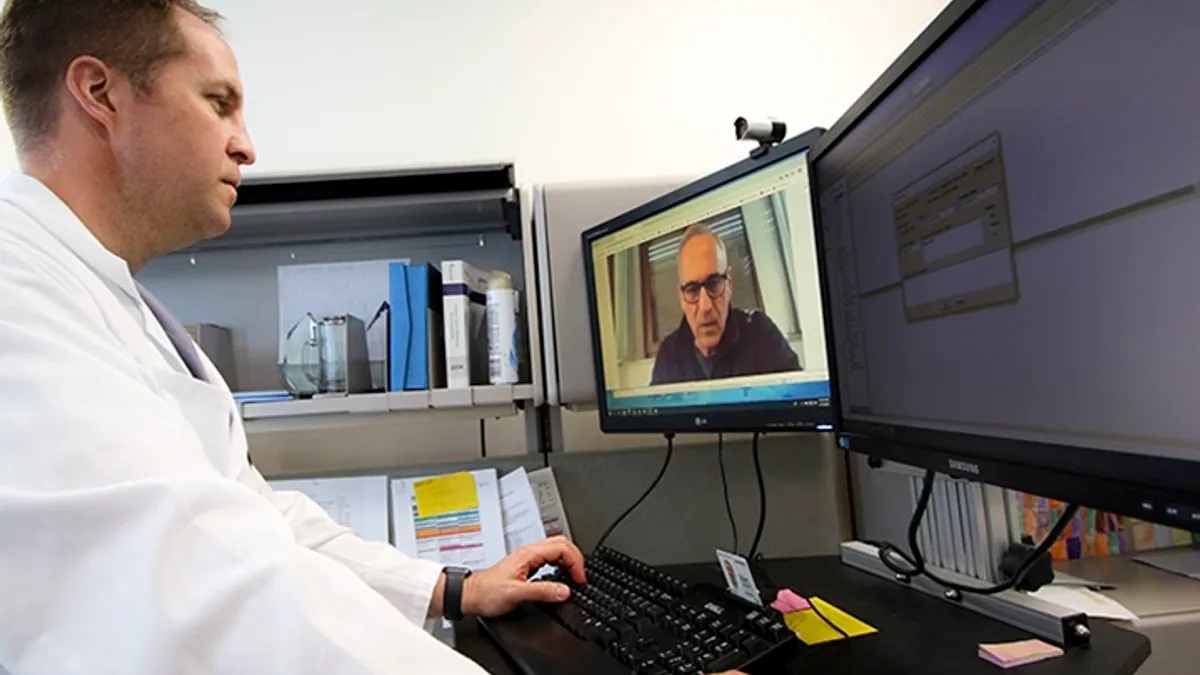Managing challenges arising from the emergency approval of numerous new medical devices during the COVID-19 pandemic is the No. 1 medtech safety issue facing hospitals in the year ahead, watchdog group ECRI said in a new report on health technology risks.
Products approved through the FDA emergency use authorization process to meet unprecedented demand for ventilators, diagnostic testing and other medical supplies during the public health crisis may not be as safe or effective as devices that have gone through the agency's normal clearance process, the patient safety organization said in its latest ranking of top health technology hazards.
The pandemic brought other device safety concerns to the forefront as well, ECRI said. They include risks resulting from remote operation of medical devices intended for the bedside, use of consumer-grade products in care decisions, use of UV light for disinfection, the rapid adoption of telehealth, and imported N95-style masks that may fail to protect healthcare workers.
ECRI compiles an annual list of top 10 medical technology safety risks based on incident investigations, reporting databases and independent testing of devices. Other concerns making this year's list include drug display selection errors, cybersecurity risks in third-party components, artificial intelligence applications that may misrepresent patient groups, and insufficient quality assurance for 3D-printed devices.
1. Managing EUA devices. FDA approved hundreds of new devices as the pandemic unfolded, including an array of SARS-CoV-2 tests. Because the EUA process uses a lower standard to assess safety and effectiveness, hospitals need to watch for performance issues and must monitor daily for any EUA status changes, ECRI cautions in the report.
The group cited an example of FDA revoking the EUA for a class of protective barrier enclosures that were found to increase rather than limit exposure to airborne particles. “We're concerned that hospitals might not have adequate processes in place to deal with this complex challenge," ECRI CEO Marcus Schabacker said in a statement.
2. Drug display selection errors. Drug ordering, storage and delivery systems that display a list of similar-looking drugs when the user enters a few letters in a search field can cause medication selection errors leading to severe harm or death. An ECRI analysis found 92% of drug names share the same first three letters with at least one other drug. Increasing the number of characters entered to five from three greatly reduces the number of possible matches, the organization advised.
3. Rapid telehealth adoption. The pandemic drove a surge in telehealth services that is expected to continue and potentially accelerate in 2021. The sudden change in healthcare delivery creates challenges ranging from insufficient user training to system integration woes that could increase the risk of medical errors or cybersecurity breaches, or hinder certain populations of patients from accessing care, according to ECRI. Conducting a technology and cybersecurity risk assessment and verifying patient selection methodology are potential solutions.
4. Imported N95-style masks. ECRI testing found more than 60% of imported respirators not approved by the National Institute for Occupational Safety and Health failed to filter airborne particles as well as claimed. Of particular concern were KN95 masks imported from China. Use of less-effective respirators may increase staff and patient exposure to infectious respiratory diseases.
5. Reliance on consumer-grade products. Healthcare providers have considered use of consumer-grade devices to reduce bedside visits and COVID-19 exposure or when a traditional medical device has been unavailable in the pandemic. But measurements from these products can be inaccurate or misleading, ECRI said. The organization recommends against use of consumer-grade devices for patient care, especially when monitoring the critically ill.
6. UV devices for disinfection. Ultraviolet light technologies can be used to disinfect surfaces and spaces but may not deliver a high enough dose to inactivate microorganisms, ECRI said. The devices typically are not regulated by FDA. Improper use also can expose the operator or others to unsafe levels of UV light.
7. Software component vulnerabilities. The report also flagged third party operating systems and other software incorporated into medical devices, especially components no longer supported by the vendor, as major cybersecurity risks. Device makers including BD, Medtronic and GE Healthcare all faced cyber threats in the past year that prompted advisories from the Cybersecurity and Infrastructure Security Agency.
Hospitals may not be able to identify which devices have affected software, thwarting efforts to fix security vulnerabilities in device components, ECRI said. The group recommends healthcare facilities assess suppliers' ability to manage the software on their devices in inventory as well as those being considered for purchase.
8. Bias in AI data. Artificial intelligence technologies that are unreliable may misrepresent some patient populations, which could lead to misdiagnoses and inappropriate care decisions, ECRI cautioned. Avoiding bias in the data used to train an algorithm is a key challenge, particularly in diagnostic imaging. ECRI suggests hospitals conduct a risk-benefit assessment for medical technologies that incorporate AI.
9. Risks of remote device operation. ECRI said remote operation of medical devices designed for bedside use introduces "insidious risks" for patients that include less frequent visual assessment, diminished device performance due to use of longer tubing sets or reduced ability to hear or see functions, increased infection risks and potential for tampering. Remote device operation should be considered only in highly unusual circumstances, the group said.
10. Quality of 3D-printed devices. Patient-specific 3D-printed devices, built by fusing together layers of raw material, may not perform as intended if the object is created without appropriate clinical verification of the design, quality control of the manufacturing process and validation of the end product. Use of an improperly created 3D-printed device could lead to surgical complications, infection or patient injury, ECRI warned.



















